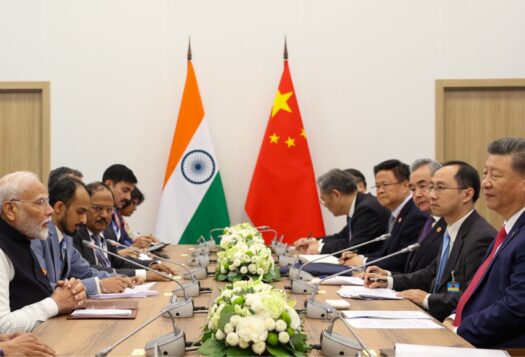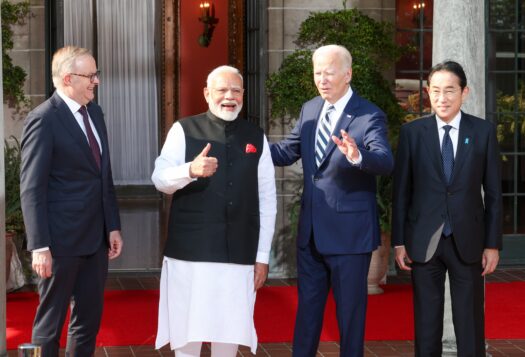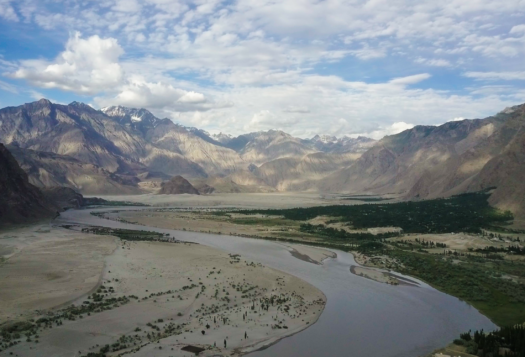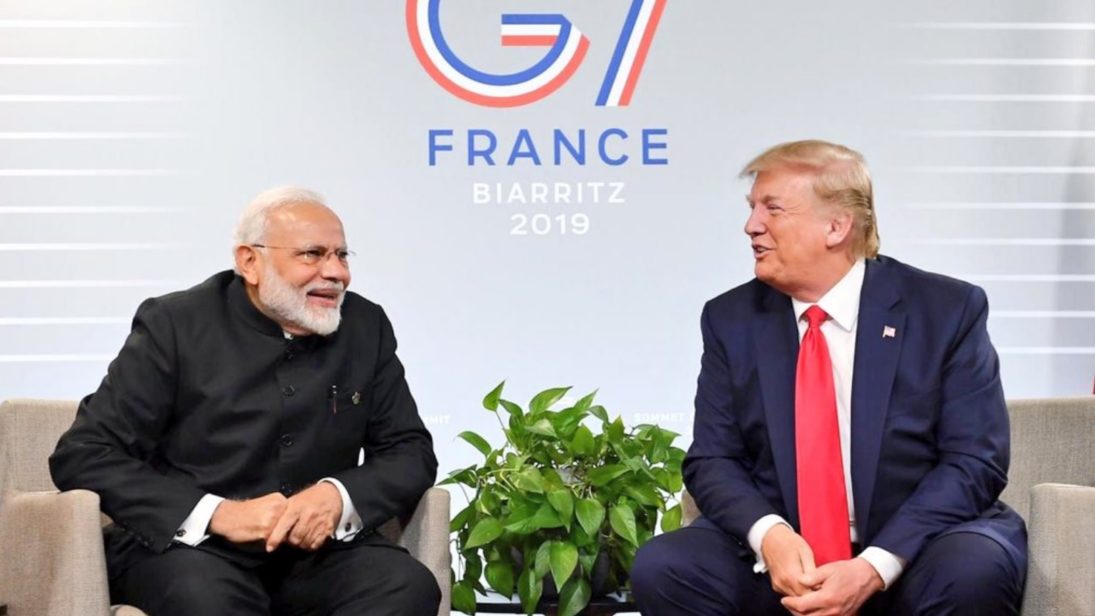
As Donald Trump assumes power as President of the United States for the second time, with Indian External Affairs Minister Subrahmanyam Jaishankar representing India during the inauguration ceremony, the U.S.-India bilateral is at a pivotal juncture. The relationship with New Delhi has been one of the most significant partnerships for Washington, maintaining a broadly positive arc over the last two decades with bipartisan political support. With elections in the United States and India coinciding in 2024, both sides have been preparing for a leadership transition and its implications for U.S.-India ties.
In India, Prime Minister Narendra Modi came back to power for a third term, albeit with a weaker mandate. In the United States, against most predictions, Trump executed perhaps the most dramatic comeback in U.S. electoral history. While there is greater continuity expected from the Modi administration, Trump returns to office with a fresh team. Given his cabinet choices and the policies that he pursued during his first term, Trump is likely to maintain the positive trajectory of U.S.-India ties, particularly in the defense sector. Nonetheless, his return to power will still pose risks and uncertainties in some aspects of the relationship, and New Delhi will need to be proactive in hedging against them by cultivating stronger ties with its other regional partners.
A Partnership on a Positive Arc
Consequential partnerships are built consciously and as a matter of choice on both ends. In that regard, India and the United States have achieved significant milestones in the last four years. A flagship achievement of the Joe Biden administration — the U.S.-India initiative on Critical and Emerging Technology (iCET) — has become a whole-of-nation effort, involving multiple agencies and institutions to develop an ecosystem of technologies that are trusted and resilient in the face of state and non-state challenges. Among other things, iCET aims to unlock joint potential in areas such as “semiconductor technology and manufacturing; sustainable agriculture and food security; clean energy; healthy equity and pandemic preparedness, and other critical and emerging technologies.”
Given his cabinet choices and the policies that he pursued during his first term, Trump is likely to maintain the positive trajectory of U.S.-India ties, particularly in the defense sector
Meanwhile, defense cooperation has evolved from a buyer-seller relationship to co-development, co-production, and transfer of technology. Cooperation now involves the collaboration of Indian private sector entities with U.S. primes through bilateral initiatives like the India-U.S. Defense Industrial Roadmap and the India-U.S. Defense Acceleration Ecosystem (INDUS-X). The Defense Industrial Roadmap underscores that “co-developed or co-produced products will be eligible for sale, including exports,” representing a quantum leap for the partnership. Thus, from the mere sale of high-end American defense equipment to India, the relationship has evolved to envisioning defense production of such systems in India and enabling transfer of advanced jet engine technology to New Delhi.
Biden also achieved some gains in the nuclear energy space. The lack of any substantive progress on the 2008 civil nuclear agreement has been a source of disappointment over the years. However, on a visit to New Delhi this month, Biden’s National Security Advisor Jake Sullivan championed cooperation on small modular nuclear reactor technology with India, in a move to transition to cleaner energy. Additionally, the United States has removed some of India’s premier nuclear research institutions from the U.S. export control list in order to enable joint research and development on energy security.
Alongside these successes, the India-U.S. relationship also had its fair share of challenges under Biden. Following Russia’s invasion of Ukraine, Biden offered unstinted support for Kyiv’s war efforts and was supported by close allies, including Japan and Australia. India, however, chose to stay neutral and created some unease in Washington. Nonetheless, the India-U.S. partnership largely survived this storm. Separately, in October 2024, the U.S. Justice Department announced charges against an Indian government official in connection with an alleged plot to murder a U.S.-based Sikh separatist leader, Gurpatwant Singh Pannun. This case too was handled relatively well by both sides, unlike a similar case in Canada that led to a breakdown in diplomatic ties between New Delhi and Ottawa. The fact that New Delhi and Washington managed to handle such thorny issues, without rolling back cooperation, demonstrates the strength of the relationship.
Will Trump Bring Winds of Change?
While Trump has generally striven to distinguish himself from Biden’s policies, on the India-U.S. relationship, Trump is likely to continue the momentum of progress. Many of Trump’s foreign policy and national security nominees have had a history of either being supporters of stronger India-U.S. ties or being hardliners on China. Secretary of State nominee Marco Rubio, for instance, introduced a bill in the U.S. Congress last year to enhance India-U.S. ties. Similarly, Trump’s nominee for Secretary of Defense, Pete Hegseth, has said, “We will work with our partners and allies to deter aggression in the Indo-Pacific from the Communist Chinese.”
These attitudes bode well for India-U.S. defense cooperation during Trump’s second term. During his first term, Trump oversaw the signing of two very significant foundational agreements — the Communications Compatibility and Security Agreement (COMCASA) and the Basic Exchange and Cooperation Agreement (BECA). These agreements facilitated stronger military-to-military interoperability between the two countries. Additionally, Trump also launched the Tri-Services Tiger Triumph Exercise, revived the Quadrilateral Security Dialogue, and renamed the U.S. Pacific Command (PACOM) to the Indo-Pacific Command (INDOPACOM), reorienting U.S. forces to focus on the Indian Ocean and emphasizing India’s regional role.
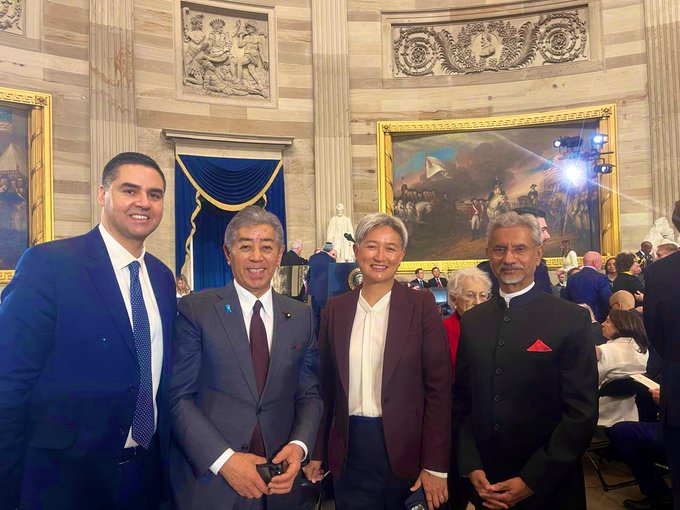
Even Trump policies that some expect to impact India negatively could very well be managed. For instance, on the campaign trail, Trump prioritized the revival of domestic manufacturing through protectionism, which may run counter to U.S. promises of co-production with India as well as supporting India’s goal of defense indigenization. But given that his foreign policy and national security team would likely be staffed with China hawks who favor India as a strong counterbalance, Trump is unlikely to disturb this evolution in U.S.-India defense cooperation.
In a similar sense, while many hardline Trump supporters and voters have characterized the H1-B visa — the visa category that allows for an overwhelming number of skilled Indian engineers to be hired in the U.S. technology sector — as a threat to their interests, Trump has spoken favorably about the visa and its benefits in recent days.
India Must Brace for Risks
Despite these encouraging signs of continuity and progress, Trump’s return to power may still bring a handful of risks and challenges to the relationship, especially on a number of economic issues. The clean energy partnership will take a back seat under the incoming administration, given that Trump has campaigned to increase U.S. fossil fuel production. This will perhaps be one of the most recognizable shifts from Biden’s focus on green energy transition and decarbonization.
Additionally, Trump has threatened to withdraw the United States from the Indo Pacific Economic Framework launched by Biden, in which India has been actively involved. These protectionist policies would track with his approach in his first term when Trump removed India from the U.S. preferential trade program—the Generalized System of Preferences—and called India a “very big abuser” of tariffs. Therefore, even as it negotiates its terms of economic engagement with Trump, New Delhi would have to revitalize its regional and bilateral trade arrangements with other countries—particularly with Southeast Asian and East Asian partners.
As Trump unleashes his brand of “America First” policies, New Delhi will need to brace for risks and consequences, develop multiple avenues of granular cooperation, and most importantly, temper expectations while aiming high.
India’s ties with Russia have been a thorny issue throughout the Ukraine war and that challenge may continue under Trump. India’s defense partnership with Russia is still crucial in keeping India’s frontline defense equipment ready for battle, and this could create resistance in the U.S. Congress against the India-U.S. defense technology partnership. However, this issue may become easier or harder to handle depending on Trump’s personal chemistry with Russian President Vladimir Putin.
India and the United States will also need to navigate their differences over China. The U.S.-China competition is global in scope, spanning different geopolitical theaters, but India’s priorities are less expansive. In the Indo-Pacific region, while the United States’ leading priority is the Western Pacific, for India, China is a more proximate power with claims on its sovereign territory. Therefore, while the United States is not likely to fight India’s war in the Himalayas, India too would not fight the United States’ wars in East Asian or Southeast Asian waters.
Similarly, India and the United States will also need to coordinate better on their priorities in South Asia. Towards the end of the Biden presidency, the political crisis in Bangladesh threw up inherent challenges as New Delhi and Washington differed over matters of principles and interests. Such differences may manifest more frequently as the United States reorients its South Asia policy post-Afghanistan to focus on other countries in the region. New Delhi therefore needs an honest dialogue with Washington over the two countries’ priorities in the region.
As Trump unleashes his brand of “America First” policies, New Delhi will need to brace for risks and consequences, develop multiple avenues of granular cooperation, and most importantly, temper expectations while aiming high. If Trump demands that allies and partners in the Indo-Pacific bear the opportunity cost of their relationships with the United States, New Delhi will have to be more proactive in cultivating its other regional relationships to protect its interests from a more transactional U.S. foreign policy.
Also Read: Trump 2.0 Could Recalibrate India-Pacific Engagements
***
Image 1: MEAIndia via X
Image 2: Dr. S. Jaishankar via X
